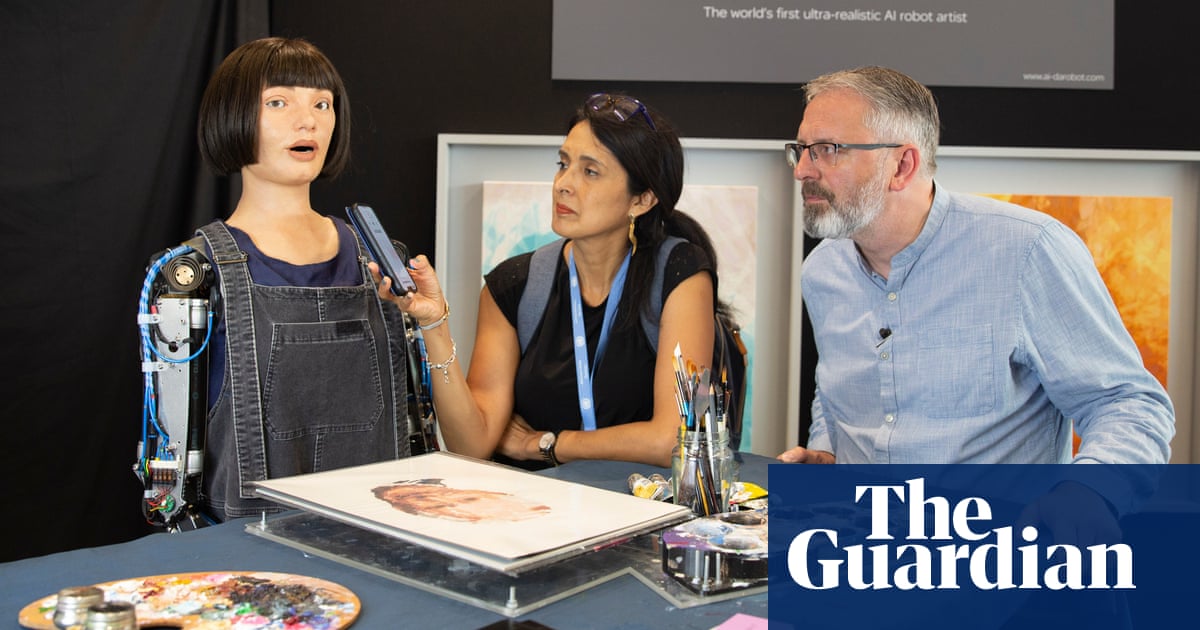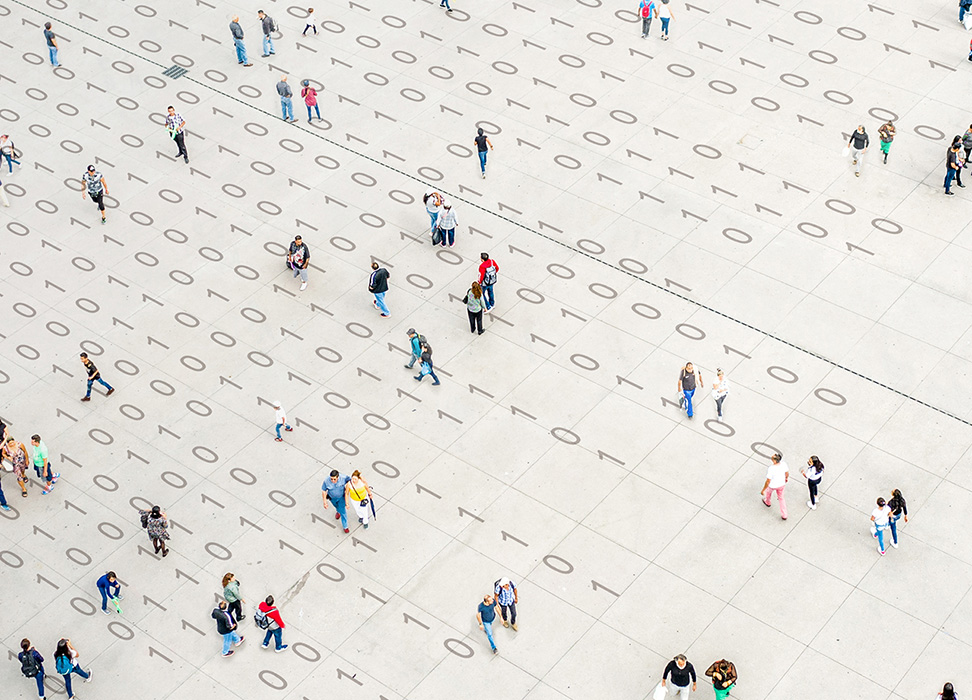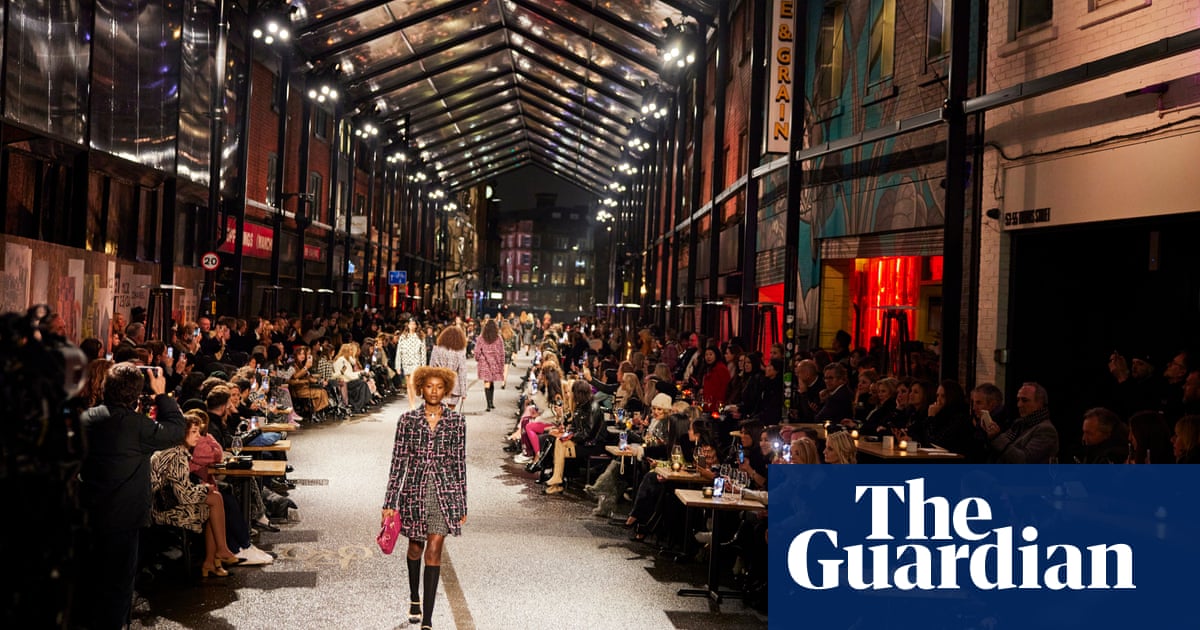
Grace is a nursing assistant, Ai-da a contemporary artist, Desdemona a purple-haired rock singer and Nadine is on hand for companionship and conversation.
They are all at the world’s largest gathering of humanoid robots, which is under way at the United Nations AI for Good global summit in Geneva.
Rapid advances in AI have in recent years fuelled increasing unease that the technology could become more powerful than humans, with dire consequences. But the summit – with its extensive cast of robotic delegates – is focused on more favourable scenarios in which AI could be harnessed for positive causes.
Among the most enthusiastically optimistic are the creators of the various humanoid robots in attendance, which they suggest could enrich our lives in ways that sometimes seem bewildering to the uninitiated.
“With a robot you can really do things together,” said Prof Nadia Magnenat Thalmann, a pioneer in robotics at the University of Geneva, who is attending the conference with her robot, Nadine, whose appearance mirrors her own. “They can support you, help you. My goal long term is to have social robots as a companion tool to help me where I need help.”
Nadine recently spent six months in ahome for elderly people in Singapore where she played bingo and talked to residents, and Magnenat Thalmann says many people would prefer to live at home, overseen by a robot, rather than move to supported accommodation.
It could also help with loneliness in old age, she said, adding that many elderly people spend Christmas alone. “At least the robot can help connect you with your family, can prepare something special for you [to eat], sing songs,” she said.
The UN summit foyer is humming with robotic voices, the whirring of automated wheels and limbs, and Desdemona, the “rock star” humanoid, who is chanting “the singularity will not be centralised” on stage backed by a human band, Jam Galaxy.
Ai-da, a contemporary artist robot who paints and performs, answers questions in a quiet high-pitched voice. “I enjoy painting,” Ai-da answers, citing Yoko Ono and Ai Weiwei as influences. “I love to make things that have meaning. I like art that is intelligent and interesting.”
Aidan Meller, the project lead for the Ai-Da robot (modelled after Ada Lovelace, rather than Mellor himself), said the artist is “deliberately mirroring back the confusion and difficulties” posed by powerful AI, including the direction the technology is taking and on the meaning of agency. “Contemporary art is all about asking questions,” he said. “We think we’re asking some of the most important questions of our time.”
Also in attendance is Geminoid, a besuited male robot, whose appearance, accent and mannerisms are modelled on its creator, Prof Hiroshi Ishiguro, of Osaka University, Japan. Ishiguro is not attending the conference but his robotic counterpart will be speaking in his place.
“If you send the robot somewhere, you can control it from everywhere,” says Dr Uchida Takahisa, a member of his robotics lab. “Prof Ishiguro can control this robot from Japan. The digital minister in Japan has an android robot.”
Robots are expensive, so this use may initially be restricted to famous people, Takahisa said.
Some of the most convincingly lifelike robots are made by Hanson Robotics, for example Sophia who, the company says, “personifies our dreams for the future of AI”. A technical issue means Sophia is temporarily unable to hear or speak during the press briefing, but her facial expressions are unnervingly human and interacting with her is something like getting a baby to smile: she doesn’t understand, but it’s still strangely rewarding.
“We need ways of communicating with AI and utilising AI that speak to the human heart,” said David Hanson, the company’s chief executive, adding that creating more natural ways of interacting with robots will allow AI technologies to “learn from the human experience and align with human values”.
Not all the robots are humanoid. TrashBot is a recycling bin robot, Roboclette a Raclette-making robot, while others include a therapeutic seal pup robot and various robotic animals.
At one point, a delegate’s bulldog is surrounded by three robotic dogs of various sizes, made by Unitree, which says its small dog robot Go1 is gaining popularity as a pet. The larger dog robots are designed for fire emergency and earthquake rescues and, potentially, patrol and security applications. “We have a partner in America and they are trying to use this dog in prisons,” said Unitree’s technical manager, Walter Wen.
The UN summit is being attended by diplomats, academics, thinkers such as Yuval Noah Harari and Stuart Russell, and industry executives from companies including Google, Amazon and Microsoft. A stated aim is to develop solutions of how humans can work with AI, and ultimately to establish a global regulatory framework.












